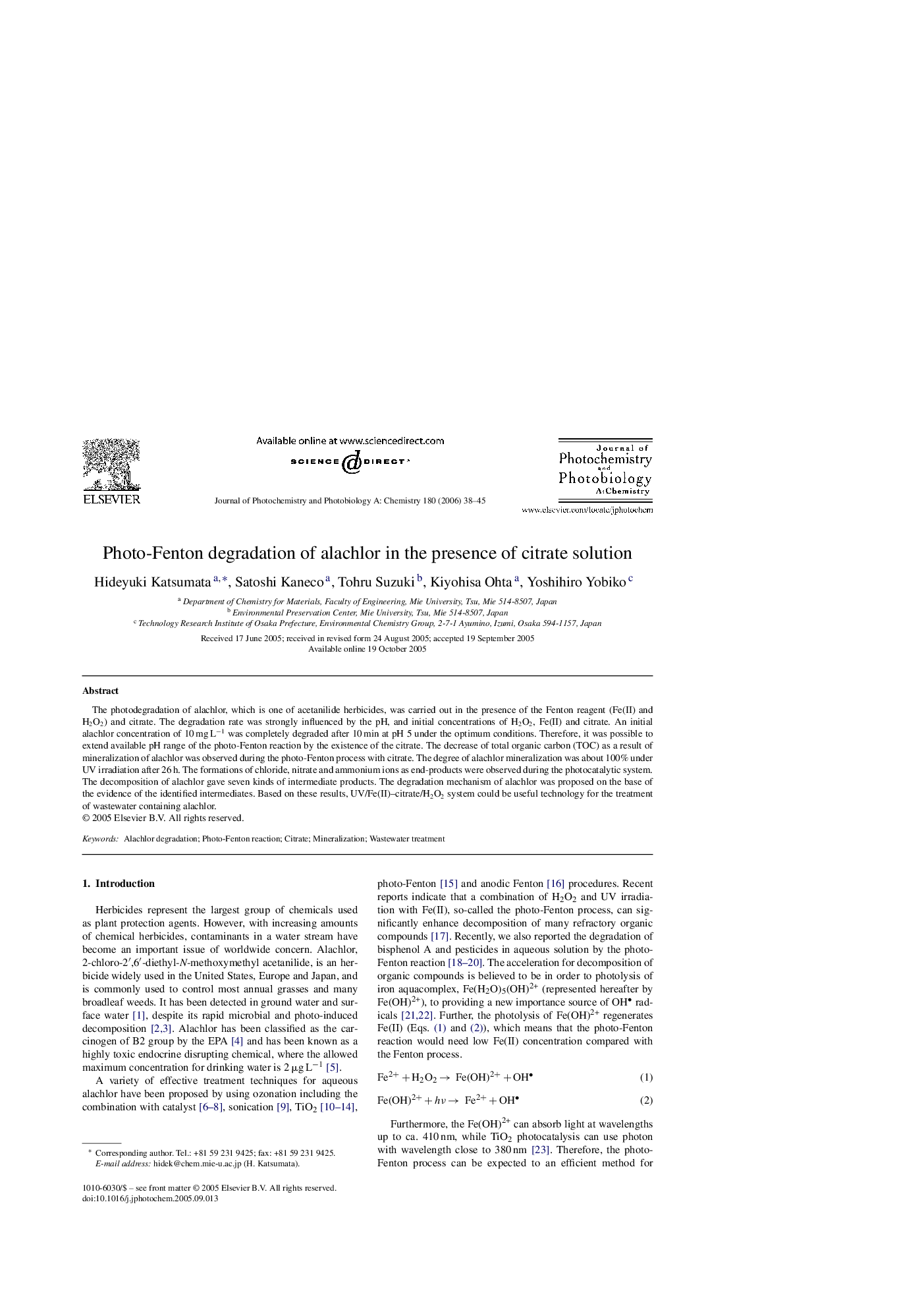| Article ID | Journal | Published Year | Pages | File Type |
|---|---|---|---|---|
| 28609 | Journal of Photochemistry and Photobiology A: Chemistry | 2006 | 8 Pages |
The photodegradation of alachlor, which is one of acetanilide herbicides, was carried out in the presence of the Fenton reagent (Fe(II) and H2O2) and citrate. The degradation rate was strongly influenced by the pH, and initial concentrations of H2O2, Fe(II) and citrate. An initial alachlor concentration of 10 mg L−1 was completely degraded after 10 min at pH 5 under the optimum conditions. Therefore, it was possible to extend available pH range of the photo-Fenton reaction by the existence of the citrate. The decrease of total organic carbon (TOC) as a result of mineralization of alachlor was observed during the photo-Fenton process with citrate. The degree of alachlor mineralization was about 100% under UV irradiation after 26 h. The formations of chloride, nitrate and ammonium ions as end-products were observed during the photocatalytic system. The decomposition of alachlor gave seven kinds of intermediate products. The degradation mechanism of alachlor was proposed on the base of the evidence of the identified intermediates. Based on these results, UV/Fe(II)–citrate/H2O2 system could be useful technology for the treatment of wastewater containing alachlor.
